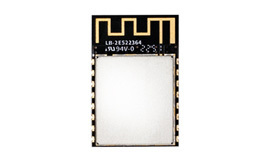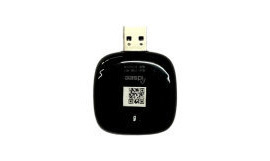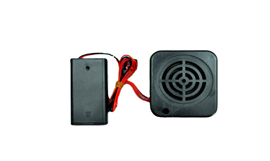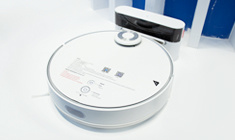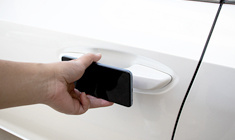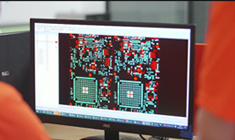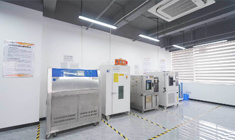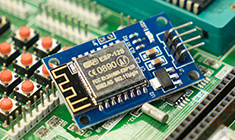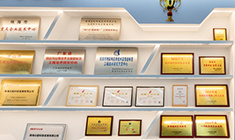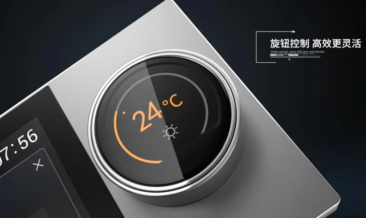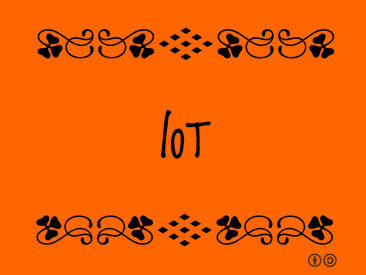
RFID tags "One ID" for airline luggage to make travel more convenient
Release Time:
2020-08-29
Recently, there has been a hot word called "One ID". Reports such as "The first of its kind in China! Guangzhou Baiyun Airport launches" One ID "service for domestic flights, allowing passengers to swipe their faces" and "One ID" service for Beijing Daxing Air
Recently, there has been a hot word called "One ID". Reports such as "The first of its kind in China! Guangzhou Baiyun Airport launches" One ID "service for domestic flights, allowing passengers to swipe their faces" and "One ID" service for Beijing Daxing Airport launches "The Whole process of swiping their faces and customs clearance" have appeared frequently in major media. So what exactly is "One ID"? After the implementation of "One ID", will the plane travel really rely on facial brushing?
What is "One ID"?
"One ID" literally means "an identification." At the airport, "One ID" can realize the smooth passage of each node in the whole travel process by relying only on a reliable electronic identity feature of the passenger, which not only greatly improves the travel experience and efficiency of the passenger, but also guarantees its security.
So what is this reliable, unique passenger identity? It has to be said that technology changes life, technology changes travel. With the development of biometric technology in recent years, through the close combination of computer and optics, acoustics, biosensors, biostatistics principles, using the inherent physiological characteristics of the human body (such as fingerprint, face, iris, etc.) and behavioral characteristics (such as handwriting, voice, gait, etc.) for personal identification, has become the general trend.
Biometrics is the most convenient and secure identification technology at present, and among the three technologies of biometrics (fingerprint, face, iris), face recognition is favored by airport intelligent travel because of its unique characteristics.
Human face and other biological characteristics of the human body (fingerprint, iris, etc.) as innate, its uniqueness and not easy to be copied characteristics for identity identification provides the necessary premise, passengers do not need to cooperate with the face collection equipment, sampling method is not "mandatory", will not cause discomfort to passengers; Passengers also do not need to contact the device directly to obtain facial images; At the same time, in the scene of crowded airport, the relevant system will automatically carry out multiple face sorting, judgment and recognition. At present, face recognition technology has been very mature, can achieve the best face capture in the case of customers without perception, without cooperation; At the same time, based on embedded core algorithm, seamless connection with security information management system, airport departure system, etc., to complete efficient, fast and convenient security face verification, face recognition check-in.
The implementation of full-process, paperless "face brushing" screening and "face brushing" boarding at airports not only reduces the waiting time for passengers, but also eliminates the fear of losing boarding passes for those who lose something. For the airport staff, it can not only reduce the burden of the comparison of witness and witness, improve work efficiency, but also realize more accurate screening, effectively prevent passengers from boarding the wrong plane, and thus improve the airport's security control ability.
"One ID" of Baiyun Airport
Having said so much about the benefits of "One ID" face brushing, let's walk into Guangzhou Baiyun Airport, the first demonstration unit of "smart airport" construction of Civil Aviation Administration, and see what its "One ID" whole process service is like.
In recent years, the information construction of Baiyun Airport has been in the forefront of all airports in China. Baiyun Airport is also the first airport in China to provide "One ID" service for the whole passenger travel process. Starting from August 5, at Terminal 1 (T1) of Baiyun Airport, passengers can swipe their faces to complete the whole travel process, including self-service check-in, self-service baggage check-in, security check and self-service boarding. Passengers who purchase tickets with second-generation ID cards and take domestic flights (excluding Spring Airlines and Jiuyuan Airlines) can have a taste of the new experience. It should be noted that children under 12 years of age are currently not eligible for this service.
It is reported that the "One ID" service of Baiyun Airport is different from the current "face brushing" boarding through ID background binding and other technologies in some airports, but strictly in accordance with the "One ID" concept of IATA (International Air Transport Association), with the passenger's facial features as the core, combining the passenger's identity information with the travel information. Establish an information database for each passenger, and use it as a unique identification identifier throughout the travel process. When passengers handle self-service check-in, self-service check-in, security check, boarding and other links, the system extracts passengers' facial features and associates passengers' travel information, and automatically releases them after verification. This method not only ensures the safety, but also reduces the number of passengers' document inspection, greatly improving the passenger travel experience.
After registering "One ID" on the wechat official account, self-service check-in machine or self-service baggage check-in machine of Baiyun Airport, passengers do not need to show their ID card, boarding pass or QR code. They can handle self-service check-in, self-service baggage check-in, self-service boarding and other businesses by brushing their face, realizing the same face to pass through the airport. Passengers who have registered for the "One ID" service can cancel the authorization to use facial information at any time during the use of the service.
Currently, passengers at Baiyun Airport can brush their faces during security checks, but according to the Civil Aviation Administration, they still have to show their ID cards and other relevant identification documents. At the same time, due to the epidemic, in order to prevent passengers from removing masks and boarding together, the "face brushing" function at the self-service gate has not been opened until the end of the epidemic.
In the future, Baiyun Airport will continue to deepen the application of "One ID" and expand its coverage to intelligent navigation display, terminal service robots, remote check-in check, VIP service, etc. It will also focus on promoting the coordination between airports, airports and airlines, airports and government departments, and gradually explore the realization of international "One ID" service.
Accelerate "One ID" "global Pass"
In fact, IATA put forward the prototype concept of "One ID" in the White Paper on Simplifying Business published in 2016. At that time, its goal was to simplify the travel process of passengers at the airport and provide convenient travel services for passengers.
In the era of globalization, with the increasing travel demand and the gradual improvement of travel standards, more and more passengers hope to travel by air can be safer, faster and more comfortable. But increasing numbers of passengers, bigger terminals, longer security lines, tighter security requirements and antiquated passenger processing are hardly making flying enjoyable.
To this end, over the past decade IATA has initiated a number of initiatives and programs aimed at improving the passenger Travel process, such as Fast Travel, Smart Security and Automated BorderControl, While each of these initiatives is a good idea, the lack of a system allows each department to work on its own, which does not allow travelers to get the best experience.
According to the current flight travel process, passengers need to arrive at the airport more than an hour in advance, and at every node of ticket purchase, check-in, security check, border check, even duty-free shopping and boarding, they need to repeatedly show their ID cards, passports and other valid documents for identity verification. It is estimated that if One ID is used, a large number of duplicate verification processes will be eliminated, saving at least 80 percent of the time spent checking documents, 40 percent of the time spent boarding and a lot of time spent at check-in and security. At the same time, travelers can be easily identified by all service providers and receive personalized services. When passengers arrive at the airport, they will be ready to take off, which greatly saves travel time. Meanwhile, the number of passengers gathered at the same time in the terminal will be greatly reduced, the airport space efficiency will be greatly improved, and the various experiences of passengers (including rest, shopping, etc.) will also be upgraded.
For airlines and airports, One ID could boost productivity by significantly reducing the amount of human resources needed to identify passengers. One ID also provides real-time visualizations of where passengers are in the airport process to enable smart queuing within the airport, benefiting airports and airlines. At the same time, "One ID" can improve the security of border inspection, airlines and airport infrastructure, effectively reduce the possibility of individuals entering and leaving under false identities, and reduce the working pressure of verification personnel.
In June 2019, IATA adopted a resolution on accelerating the implementation of One ID globally at its 75th Annual Meeting and World Air Transport Summit. "One ID" is the main project of IATA's "Passenger Service Experience (PX)" program, which aims to provide passengers with the ultimate smooth and barrier-free travel experience throughout their entire journey, based on personal identity management and biometric identification (paperless documents), with the passenger experience at the center.
At a number of airports, luggage gets its own "One ID" -- RFID luggage tags -- before passengers do, as part of IATA's Passenger Service Experience (PX) program, which is being rolled out worldwide. RFID luggage tags enable each piece of luggage to have its own chip - unique ID, which greatly improves the efficiency of baggage service and the accuracy of processing, and reduces the cost of baggage operation and labor. At present, Civil Aviation of China has taken it as an important part of smart civil aviation, and vigorously promoted it in a number of 10 million airports.
At present, the promotion of "One ID" has opened a new era of contactless air travel for the whole process, which organically combines the current epidemic prevention and control needs with convenient travel for passengers, and better helps the civil aviation industry to resume work and production. For passengers, "One ID" can provide more guarantees for their safe travel, completely avoiding the contact between passengers and staff, and effectively freeing the hands of passengers.
Of course, the promotion of "One ID" also needs to form a linkage and systematic coordination mechanism among airlines, airports, government departments and regulatory agencies, and the protection of passenger privacy data and the anti-counterfeiting of identity will also be an important topic it faces.
Reprinted from RFID World network

Guangdong Joinet IOT Technology Co.,Ltd
Manufacturing Base:
Joinet Technology Park,No. 168 Tanlong North Road,Tanzhou Town,Zhongshan City,Guangdong Province,China
Pre Sales Hotline:19966308713 13823973022
Switchboard:0760-8663 0003 (transferred) 523
Pre Sales Email:sw@znaiot.com


Contact Us:
Looking forward to your call anytime



